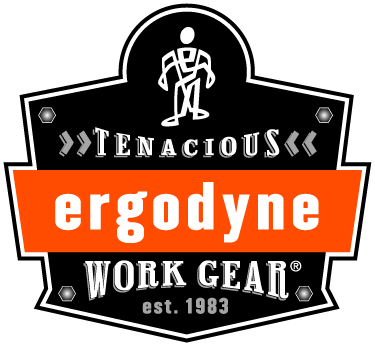From Frozen Freight to Frostbite Prevention: Cold Storage Warehouse Best Practices

Spending 12 hours a day in a giant sub-zero freezer is not for the faint of heart. It requires grit, intelligence and a lot of layers.
Cold storage facilities play a crucial role in preserving many of the items we rely on daily, from life-saving medications to fresh meat and perishable produce.
These behind-the-scenes giants are the reason your frozen pizza is still edible when you finally get around to eating it and why pharmaceuticals don’t spontaneously combust on their way to your pharmacy. It’s a whole system of high-tech coolers and freezers and meticulous processes that makes sure everything stays just the right amount of cold.
Cold Storage Logistics: What is a Cold Storage Warehouse?
Cold storage warehouses are large industrial buildings that house many different types of freezers and coolers. Each room is specifically designed for a niche type of preservation, from instant freezing to consistent chilling.
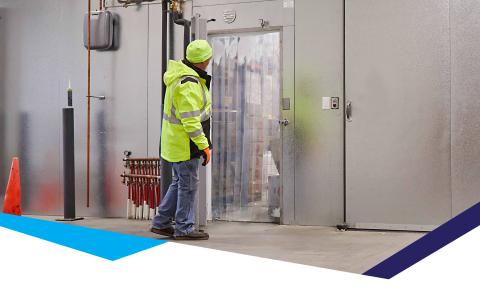
These temperature-controlled facilities are crucial for industries like food, pharmaceuticals and chemicals, where precise storage conditions and consistent temperatures are essential.
From frozen foods like ice cream to life-saving vaccines and bio samples, cold storage warehouses mitigate temperature fluctuation to ensure everything stays in peak condition until it’s ready to be shipped out and used. Think of them as the unsung heroes behind the scenes, keeping the things we need at the right temperature—because nobody wants a freezer-burned dinner.
The People: Who Works in Cold Storage Warehouses?
Working in a cold storage facility isn’t for everyone—especially if low temps and heavy lifting aren’t your thing. But for those who thrive in a cool environment, it’s a unique and essential role. From warehouse managers who oversee operations to forklift drivers navigating pallets in sub-zero aisles, the crews behind cold storage include a variety of skilled workers.
You’ll also find technicians who ensure the complex refrigeration systems run smoothly, and safety managers who ensure all workers are warm enough to work. It’s a team effort that keeps things frozen, chilled and operating at high efficiency.
According to Flagship Logistics, some of the industries that utilize cold storage facilities include:
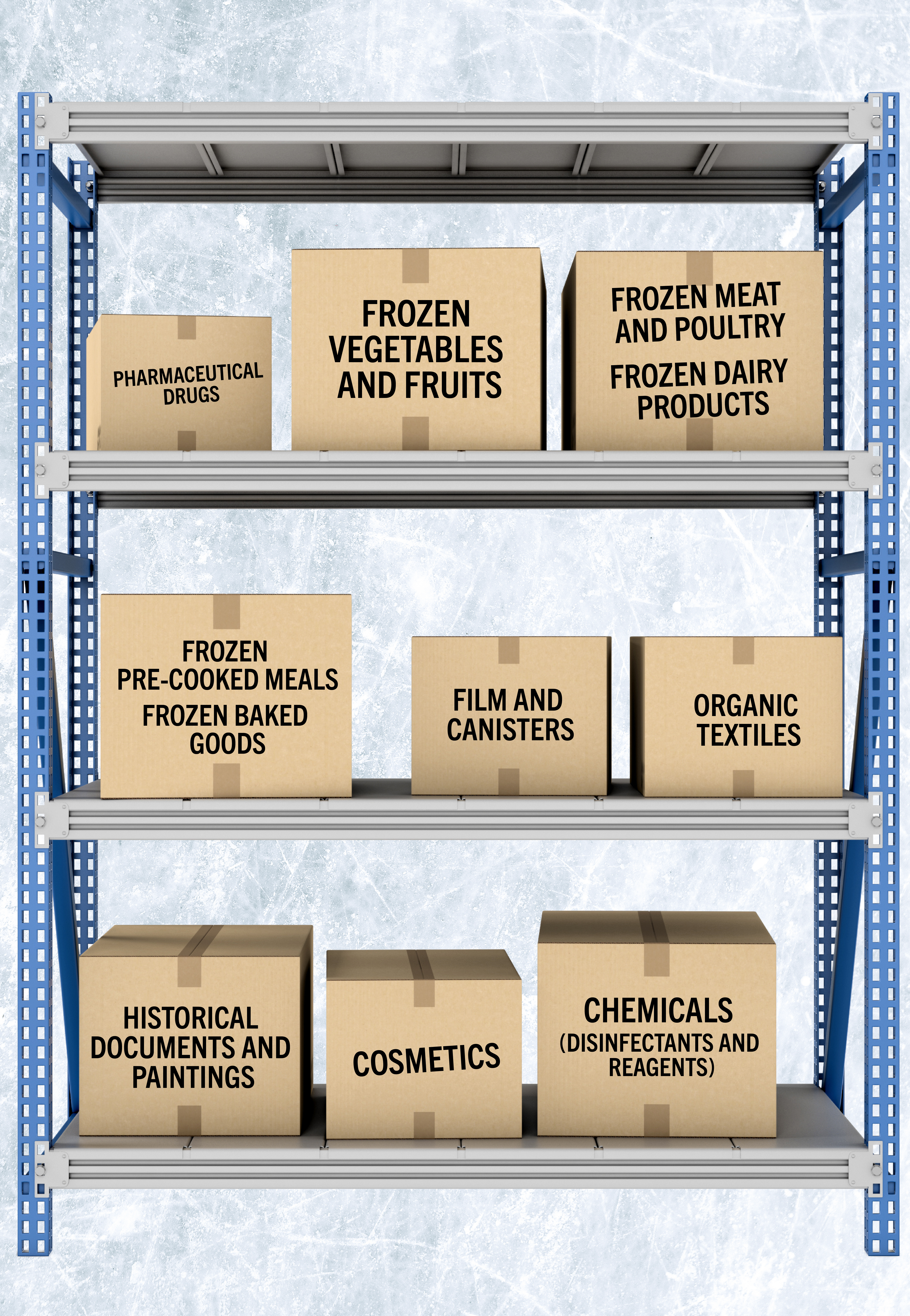
Types of Cold Rooms: What are the Different Sections of a Cold Storage Warehouse?
Whether you’re handling food, pharmaceuticals or anything in between, knowing the layout of the facility and what to wear for each area is key to staying safe and comfortable on the job.

Freezer Room
The freezer usually ranges from -10°F to -20°F (-23°C to -29°C). It’s designed to store products that need to stay frozen, such as meats, ice cream and frozen vegetables.
Cooler Room
Not as cold as the freezer, the cooler room keeps things at a chilly but manageable 32°F to 50°F (0°C to 10°C). The cooler usually stores perishable goods like dairy, fruits, vegetables and beverages that need to stay fresh without freezing.
Ambient Air Section
The Ambient Air Section stores goods that do not need special temperature control. This area is usually kept between 59°F to 77°F (15°C to 25°C) and is used to store non-perishables such as dry goods.
Blast Freezer
The blast freezer is a specialized zone where items are rapidly frozen at extremely low temperatures, often below -30°F (-34°C). It’s used for products that need to be frozen almost immediately. Blast freezers also help maintain products' flavor, texture, consistency and nutrients.
Refrigerated Dock Area
This is the transitional space between the outside world and the cooler or freezer rooms. It's typically kept cool but not as cold as the storage areas, ensuring products can be loaded and unloaded without spoiling.
Cold Storage Workwear: What should I Wear in Each Section to Stay Warm?

When working in a cold storage facility, it's essential to wear the right layers to stay both safe and warm. The temperature can range drastically depending on the area you're in, so layers and adjusting your clothing accordingly is key. Here's a guide on what to wear for each section of a Cold Storage Facility:
Walk-in Freezer
In the freezer room, staying warm is your top priority. Start with a thermal base layer (long-sleeve shirts and pants) to provide insulation. Over this, wear insulated, water-resistant outerwear like a jacket designed for extreme cold, along with a hat, headband or gaiter that covers your ears. It's also important to wear gloves that allow for dexterity but are still warm enough to protect against frostbite. A pair of thermal socks and insulated boots are necessary to keep your feet from getting cold and damp throughout your shift.
Chiller Rooms
Similar to a freezer, working in a chiller room requires a lot of warm clothes and layers. You will want to start with a thermal base layer (long-sleeve shirt and/or pants) to provide insulation. Over this, wear a lighter insulated jacket that prioritizes both warmth and mobility, as well as a hat, headband or gaiter that covers your ears. It's also important to wear gloves that allow for dexterity but are still warm enough to protect your hands and fingers. A pair of boots are necessary to keep your feet from getting cold and damp throughout your shift.
Ambient Temperature Areas (Near the Door/Loading Docks)
These areas can vary in temperature, typically staying just above freezing but still cool. Here, you’ll want to dress in layered clothing. A good option is a moisture-wicking thermal shirt as your base, topped with a mid-layer fleece for warmth, and a light, insulated jacket. For your bottom half, thermal pants under regular work pants can give you the flexibility to adjust to different environments. Light gloves and sturdy closed-toe shoes are also important for protection while moving goods.
Packing/Processing Areas (Near the Cold Zone)
For packing areas located just outside of the cold storage zones but still exposed to chilly drafts, you’ll need a balanced approach to dressing. A light jacket or insulated vest over a breathable base layer is ideal. If you’re moving between warmer and cooler areas frequently, layers are your best option as they give you the flexibility to add or remove clothing as you see necessary. Boots with traction devices are also key in preventing accidents in slippery areas.
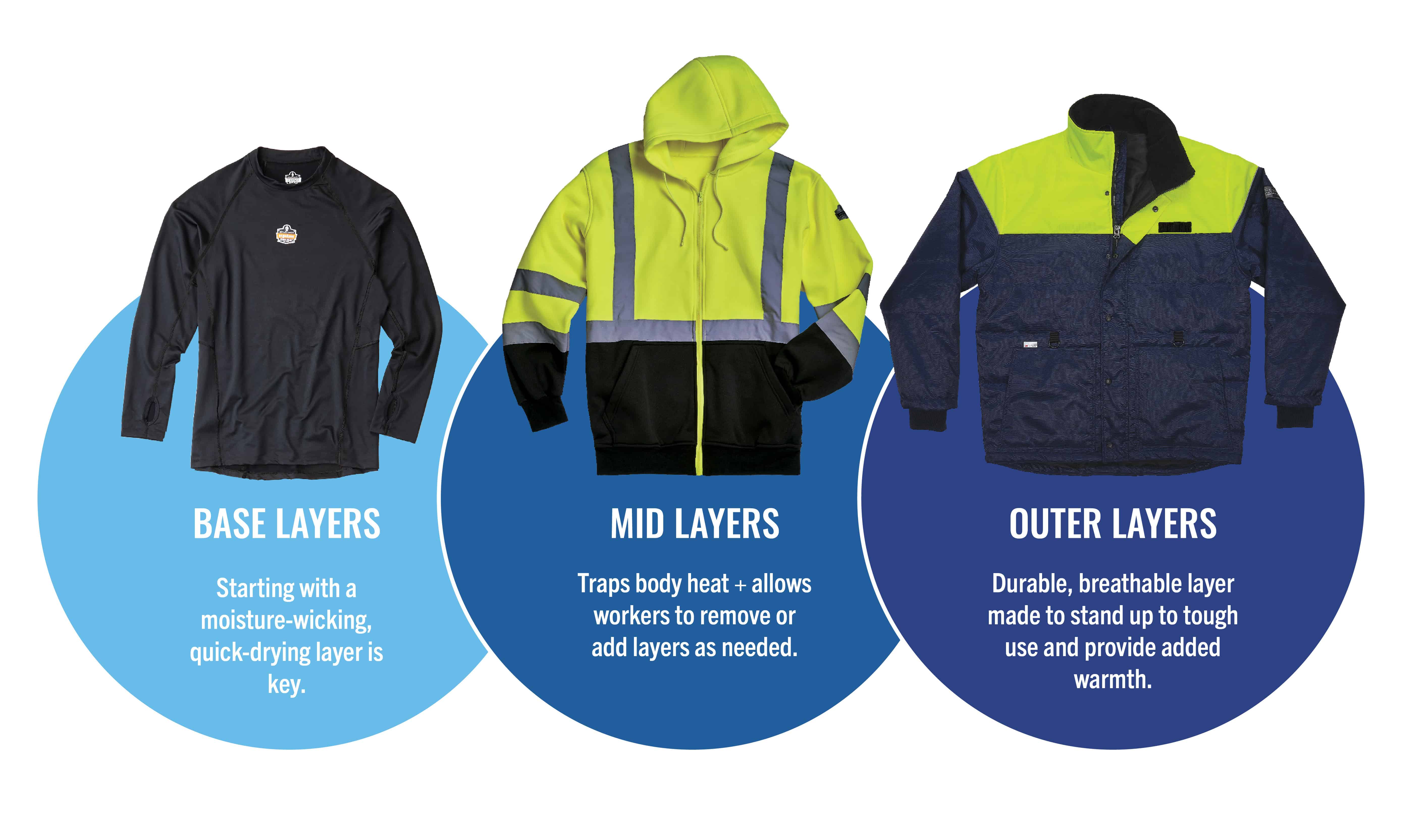
Combat the Cold: What does Ergodyne Have to Offer?
Ergodyne offers a comprehensive line of Cold Storage clothing and accessories to combat the cold in both cold storage facilities, and anywhere that freezing your toes off would be of concern. From the top of your head to the bottom of your feet, every inch deserves to stay safe (and warm) no matter the conditions.
Check out the full line of Ergodyne Cold Storage Apparel here.
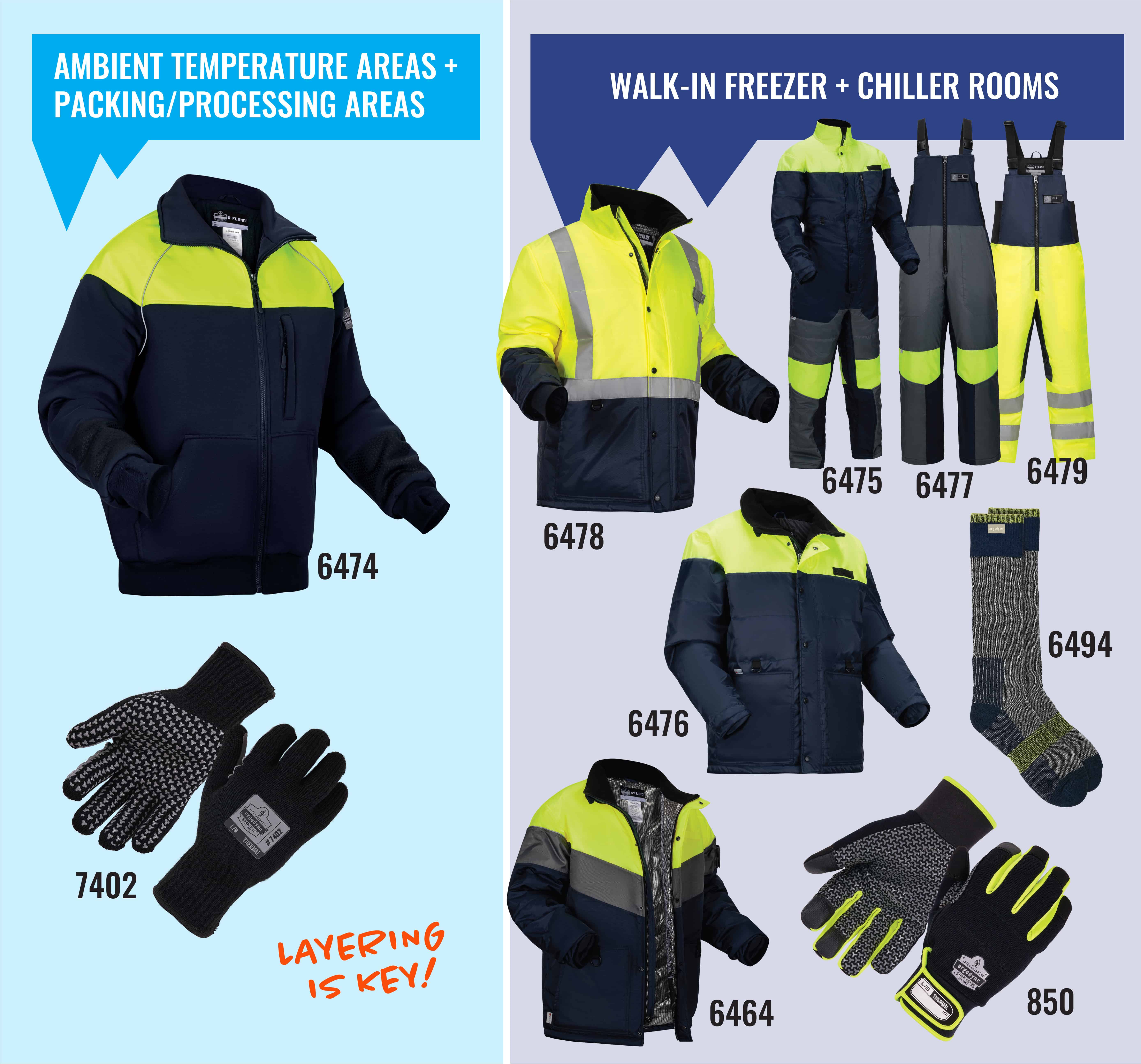
FAQ
Cold storage is the process of storing food and other products at temperatures below freezing to retard spoilage and extend their shelf life. Cold storage facilities are typically maintained at temperatures ranging from 40 to -20° Fahrenheit (4 to -29° Celsius). A chiller is usually around 35° Fahrenheit (F). A freezer typically ranges from 5 to -20° F. Wind chill can play a factor when fans are on as well, making it colder.
When working in cold storage settings, such as a refrigerated warehouse, it is important to wear appropriate protective clothing to prevent hypothermia and frostbite. Layering is incredibly important and will help maintain your core body heat. This includes:
- Insulated jacket and trousers: An insulated jacket and trousers with a high CLO rating will help to trap body heat and keep you warm.
- Insulated boots: Insulated boots will help to keep your feet warm and prevent frostbite.
- Insulated hats and gloves: A hat and gloves will help to prevent heat loss from your head and hands.
- Balaclava or face mask: A balaclava or face mask will help to protect your face from the cold air.
- Thermal underwear: Thermal underwear can help to wick away moisture and keep you dry. When facing constant cold conditions, layering is key. This includes a base layer (like a thermal long sleeve that will control/wick away moisture), mid-layer (insulated clothing that will trap in heat), and an outer layer (like a jacket or bib overalls that will provide resistance to weather-related elements like wind and rain).
By wearing and layering appropriate protective clothing, you can stay safe & comfortable when working in cold storage settings.
